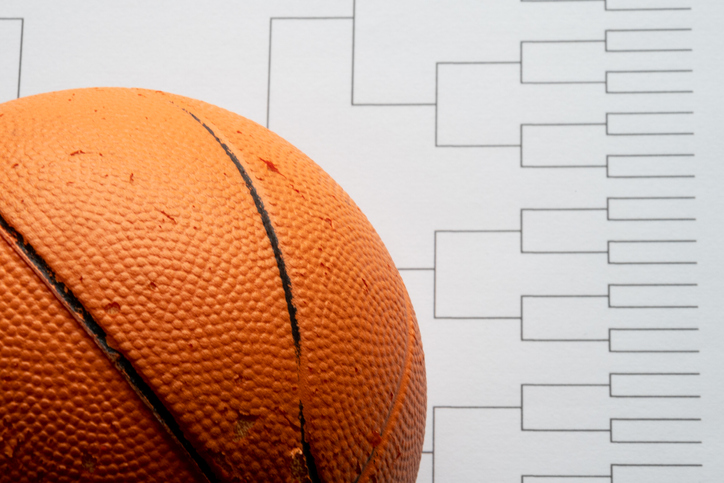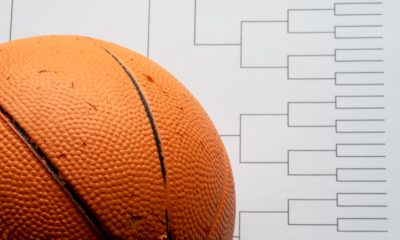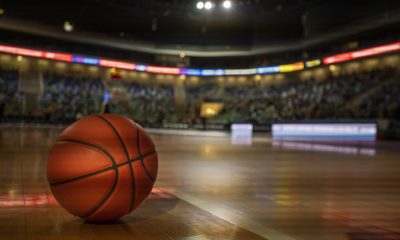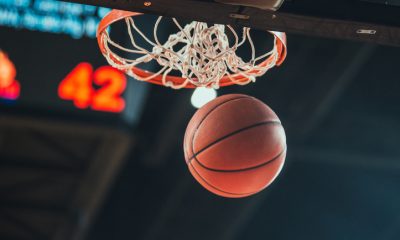
Well, here we are, finally. After two long years, we get our March Madness back. The picks are made. The brackets are filled out and soon to be ruined. Harkening back to 2019, we remember just how chalky the Men’s Tournament ended up being with only one seed lower than a #5, #12 seed Oregon, making it to the Sweet Sixteen. The Elite 8 featured three #1s, two #2s, two #3s, and one #5. There would be no Cinderella story in 2019. This was in fairly stark contrast to 2018 which saw six teams seeded 7th or lower, including two #11 seeds, make it to the Sweet Sixteen. There were as many #11 seeds as #1s that made it to the Sweet Sixteen. Moreover three #9 seeds or worse made it to the Elite 8. And who could forget the #11 seed, Loyola-Chicago, making it to the Final Four, preceded of course by the first instance of a #16, UMBC, beating a #1, Virginia. So in very recent history, we have one very chalky Men’s Tournament and one pretty crazy one that lived up the “March Madness” name. But what will this year look like? I’m going with crazy, and here’s why:
- The obvious reason to expect a high level of cray this year is friggin COVID. We have already seen the havoc it can wreak during the regular season (say hello to Baylor, Colgate, and numerous other teams) and even more recently during the conference tournaments (say goodbye to Duke, Kansas, and Virginia). The COVID factor is one that is impossible to predict. It can strike any one of the teams at any moment. Your Tournament winner prediction can be gone in an instant without ever even playing. I really hope this isn’t the case and that the precautions surrounding the Tournament are effective. Nobody wants to see a team have to forfeit because of crappy COVID. But, it’s there and simply can’t be predicted.
- In other weirdness, we may be experiencing some kind of changing of the guard. The last twelve Tournaments going back to 2008 have been absolutely dominated by teams from the ACC and Big East (“BE”). Nine of the last twelve, including the last five in a row, Champions have been from those two Conferences. You could also throw in 2014’s UCONN who had just moved to the American Athletic Conference from the BE. Other than the winners from the ACC and BE, we have one SEC team, 2012’s outstanding 38-2 Kentucky team, and one Big-12 team, 2008’s fantastic 37-3 Kansas team. That’s it. Thus, no Champions from the Big 10, Pac-12, or any of the Mid-Major Conferences (except for UCONN technically of course). You can’t even find a Champion who resides outside of Eastern Standard Time (“EST”) except the aforementioned 2008 Kansas squad. But this year, we have Gonzaga from the WCC, Michigan and Illinois from the Big Ten (“B10”), and Baylor from the Big 12 (“B12”) sitting as #1 seeds. None of these teams are in the ACC , BE, or reside in the EST. The B10 had five teams in the AP top 25 heading into the Tournament, the B12 had seven. In contrast, the ACC had a total of three teams in the AP top 25 heading into the Tournament and none of those three teams were Duke, UNC, or Louisville. And Virginia had to exit the ACC tourney due to COVID and might not even play. The BE meanwhile had merely two teams in the AP 25 heading into the Tournament: Villanova, who hasn’t won since losing their best player for the season, and Creighton, who just got blown out by the 13-12 Georgetown Hoyas in the BE Final.
- Increased competitiveness is here. With teams like Duke, UNC, Kansas, Kentucky, and Villanova not being what they used to be, things seem to be more wide open this year. (This is the first time since 1976 that both Duke and Kentucky are sitting at home watching.) You can see the increased competition the Big Six Tournament Conferences where only Alabama was able to win their Conference in the regular season and also win their Conference Tournament. So, for 2021 we are either going to have a return to B10 or B12 glory, have a true Mid-Major Champion, or have a non-#1 or 2 seed win it all. Speaking of 1976, Gonzaga will need a time machine and put on some bell bottoms as that was the last time a team went undefeated (Indiana finished 32-0). And we know that overall #1 seeds in the Tournament don’t have a great record in the Tournament. The pressure gets to most teams. So, something’s gotta give this year. Would you expect anything less in 2021?
My bracket is based on my 34-variable weighted algorithm that 1) compiles the stats across numerous categories of the last 12 Tournament Champions (though I mostly ignore the 2014 UCONN tail event team) and compares them to the current field of hopefuls, and 2) looks at recent 12 year trends in seed matchups, upset trends, and other non-quantifiable traits (e.g., recent injuries, returning players, PG play, and experience level of starters and the Head Coach). And for this year, I manually added in a bit more crazy, per my points above. Your probably asking yourself, ‘hmmm, is the OGinut really onto something? Do his algos really work?’ And the answer is, hell no. Look, I know that my algorithms don’t really work as there are simply too many other variables and randomness for which my non-super computer, non-machine learning AI model cannot account. But that’s not the point. You see for me, the fun is in the compiling of all of the stats, tweaking the model each year, and convincing myself that I have figured out the secret formula. It’s similar to people that think they have figured out the lottery by studying past winning number patterns. It’s a futile task, but we all enjoy it anyway.
This was an extra tough year to figure this out because we had a shortened season and thus an incomplete data set, and moreover, none of the teams in the Tournament fit all of the variable categories of the previous 11 winners used as the regression line. Ok, hedging complete. My model awarded the highest points total to the following five teams:
- Not surprisingly, Gonzaga by a fairly large margin. And this was after discounting that they are the overall #1 seed and undefeated. And despite the improvement in strength of schedule (SOS), the Zags are still outside the range of recent winners. I will definitely have them as the Champs in a bracket or two, but that’s it as I think the pressure will prove too great. In this bracket, I have them losing to my top #7 or higher seed, Oregon. (A #7 seed or higher makes the Final Four often).
- Illinois. The Big Ten Tournament Champs hit almost of the Big Dance Champ variables ranges except FT% and the fact that they do not have a Head Coach with at least 300 career wins. Only the enigma that was the 2014 UCONN Huskies has had a coach with less than 300 wins in the past 12 years. Could it happen again this year. Sure.
- Michigan. The Big Ten Regular season Champs hit the most variables ranges of any other team, only missing on the Head Coach wins category. However, a large discount needs to be applied here as a big part of the stats garnered by Michigan included having Livers on the court. Most experts have Michigan as the 1st #1 seed out, and I have to agree.
- Baylor. Daaaa Bears statistically proved to be the weakest of the four #1 seeds and this was mainly due their defensive efficiency ranking, plus the large gap between their offensive efficiency ranking and defensive efficiency ranking. They also lack a Coach with 300 career wins, and their FT% is slightly out of range. So for Baylor to win it all, they would really have to improve on defense and hit their FTs. It’s certainly possible, but I don’t think they get there.
- Houston. This was a bit surprising as I figured Alabama would be here. But the AAC Tournament winners almost tied with Baylor in awarded points by my model. They were by far the highest ranked #2 in the field. The only knock against them was being out of the range on SOS, but that number would go higher as they move through the Tournament. The other main obstacle is that they’ll have to face Illinois in the Final Four if they make it there. I believe the winner of that proposed matchup takes it all. For me though, in this bracket, that is Illinois. I will have Houston in a few large pool brackets, though. Why not…
Other surprising (or not so surprising) high algo point teams relative to their seeding that the model spit out were #12 seed UCSB, #13 seed Liberty (though I doubt they beat Cade Cunningham and Okla St.), and #14 seed Colgate. The UCSB and Liberty ones I can understand as they scored high across all offensive categories including TO/assist ratio, rebound rate, 3PT shooting, and FT%. Colgate, however, is a mystery. They crushed their opponents this year for the most part. Problem is, they only played 5 different teams due to COVID craziness. Five! My model can’t discount for that, so I had to make a manual override.
So check out my Bracket and let’s see if my models hold, if my manual overrides make me look stupid, or most likely, both my models and my manual overrides make me look stupid. My Better Half’s Bracket meanwhile, is an interesting study in picking teams based solely on preferred location.













You must be logged in to post a comment Login